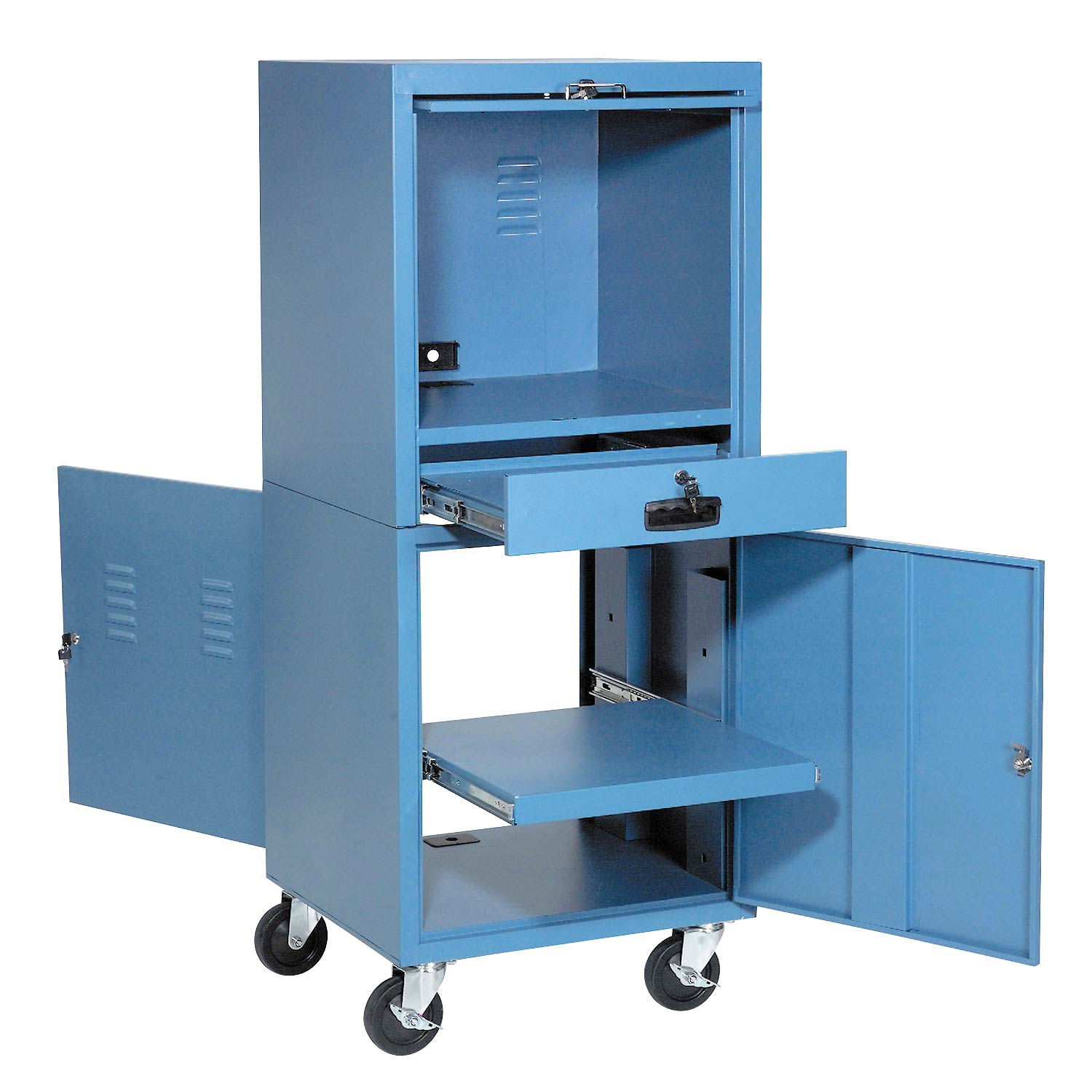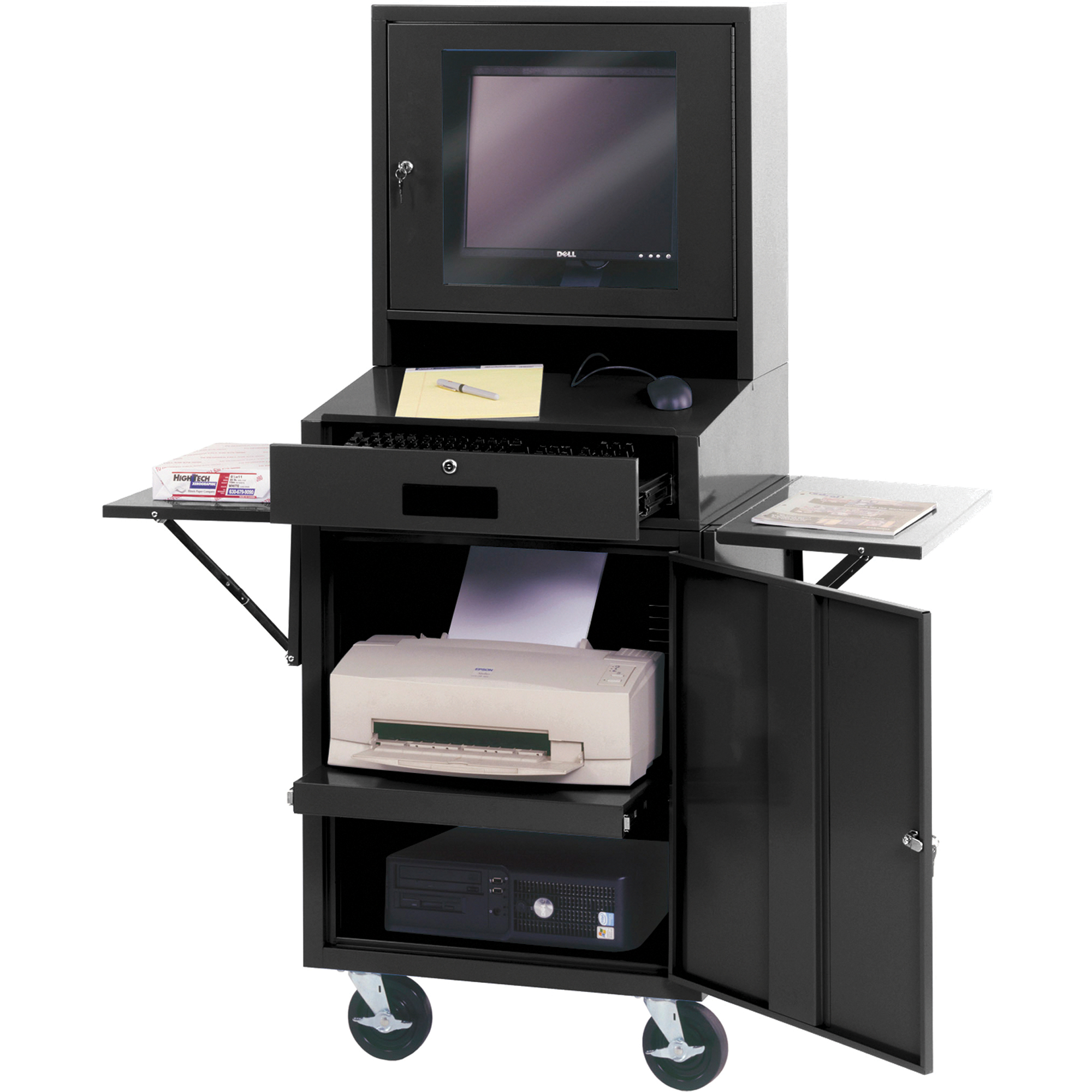Types of Locking Metal Computer Cabinets

Locking metal computer cabinets are essential for protecting valuable electronic equipment from unauthorized access, theft, and environmental hazards. These cabinets come in various types, each with unique features, sizes, and applications.
Types of Locking Metal Computer Cabinets
Locking metal computer cabinets are broadly categorized based on their size, features, and intended applications. These categories offer a range of choices to meet diverse needs, from small home offices to large server rooms.
- Desktop Cabinets: These are compact cabinets designed to house a single computer system, monitor, and peripherals. They are typically small and lightweight, making them suitable for home offices or small businesses. Examples include the APC NetShelter SX Mini and the StarTech.com 19-Inch Server Cabinet.
- Server Cabinets: Server cabinets are larger and more robust cabinets designed to house multiple servers, network equipment, and other IT infrastructure. They often feature adjustable shelves, cable management systems, and ventilation systems to ensure optimal performance and cooling. Examples include the Schneider Electric NetShelter SX and the Raritan PX Series.
- Wall-Mount Cabinets: Wall-mount cabinets are space-saving solutions that are mounted on a wall. They are typically smaller than desktop or server cabinets and are ideal for home offices or small businesses with limited floor space. Examples include the Tripp Lite Server Cabinet and the APC NetShelter SX Mini.
- Mobile Cabinets: Mobile cabinets are equipped with wheels and casters, allowing them to be easily moved around. They are often used in data centers or server rooms where equipment needs to be relocated or accessed frequently. Examples include the APC NetShelter SX Mobile and the Raritan PX Series.
Locking Mechanisms
Locking mechanisms play a crucial role in securing computer cabinets and protecting valuable equipment. Various locking mechanisms are available, each offering different levels of security and convenience.
- Key Locks: Key locks are the most common type of locking mechanism, using a key to open and close the cabinet. They are relatively inexpensive and easy to use. However, they are less secure than other options, as keys can be lost or stolen.
- Combination Locks: Combination locks require the user to enter a specific combination of numbers to open the cabinet. They are more secure than key locks, as they are not susceptible to key theft. However, they can be difficult to remember and may require multiple attempts to open.
- Electronic Locks: Electronic locks use electronic keys or access cards to open the cabinet. They are the most secure option, as they can be programmed to grant access only to authorized individuals. However, they are more expensive than other options and may require batteries or external power sources.
Security Features of Locking Metal Computer Cabinets

Locking metal computer cabinets provide a physical barrier against unauthorized access to sensitive equipment and data. These cabinets are equipped with various security features that enhance their effectiveness in protecting valuable assets.
Key Locks
Key locks are the most basic and common security feature found in locking metal computer cabinets. They operate using a key that unlocks the cabinet’s door.
- Single-cylinder locks are the simplest type, where the key operates only on the outside of the door. These locks are relatively inexpensive but offer limited security, as they can be easily picked or broken with force.
- Double-cylinder locks require a key to be inserted on both the inside and outside of the door, offering greater security than single-cylinder locks. These locks are more difficult to pick or break, making them suitable for environments with higher security requirements.
- Keyed-alike locks are sets of locks that use the same key. This feature is useful for cabinets located in different areas, allowing authorized personnel to access all cabinets with a single key.
- Key-operated locks with anti-picking mechanisms incorporate features such as pins, tumblers, or other internal components designed to make picking more difficult. These locks provide enhanced security and are suitable for environments with high security needs.
Combination Locks
Combination locks offer a more secure alternative to key locks, requiring the user to input a specific combination of numbers or letters to unlock the cabinet.
- Mechanical combination locks use a series of dials or wheels to set the combination. These locks are generally more secure than key locks, as they are not susceptible to picking or breaking.
- Electronic combination locks utilize a keypad for entering the combination. These locks offer greater convenience and flexibility, as they can be programmed with different combinations for different users. Electronic combination locks can also incorporate features such as audit trails, which record access attempts and provide valuable information for security purposes.
Electronic Locks
Electronic locks utilize electronic components and sensors to control access to the cabinet. These locks offer advanced security features and convenience, such as remote access, user management, and audit trails.
- Card readers allow access by swiping a card with a unique identifier. These readers can be programmed to accept various types of cards, including proximity cards, magnetic stripe cards, and smart cards.
- Biometric locks use unique biological characteristics to authenticate users. Common biometric features include fingerprints, facial recognition, and iris scans. These locks offer a high level of security, as they are difficult to duplicate or compromise.
- Keypad locks allow access by entering a specific code on a keypad. These locks are relatively inexpensive and offer good security when used with a complex code and regular password changes.
Biometric Locks, Locking metal computer cabinet
Biometric locks utilize unique biological characteristics of individuals to authenticate their identity and grant access. These locks offer a high level of security and are increasingly becoming popular in various applications, including locking metal computer cabinets.
- Fingerprint locks use a fingerprint scanner to verify the user’s identity. These locks are highly secure, as fingerprints are unique to each individual and difficult to duplicate.
- Facial recognition locks use a camera to capture the user’s face and compare it to a stored database. These locks are convenient and contactless, but they can be vulnerable to spoofing attacks using photographs or videos.
- Iris scan locks utilize an iris scanner to identify individuals based on their unique iris patterns. These locks are highly secure, as iris patterns are extremely difficult to replicate.
Locking metal computer cabinets are a great way to secure your valuable equipment, but sometimes you need a more stylish and functional solution. If you’re looking for something that blends seamlessly into your library or media room, a library style multimedia storage cabinet might be the perfect fit.
These cabinets offer a sleek design with ample storage space for all your media needs, while still providing the security of a locking mechanism.
A locking metal computer cabinet is a great way to keep your valuable equipment safe, especially if you’re working from home or have a small office. But what about the rest of your stuff? If you’re looking for ways to organize and secure your garage, check out our guide on best garage cabinets and storage.
You can find great deals on sturdy, secure cabinets that can help you reclaim your garage space. Once you’ve got your garage in order, you can feel confident that your computer and other valuable items are safe and sound.